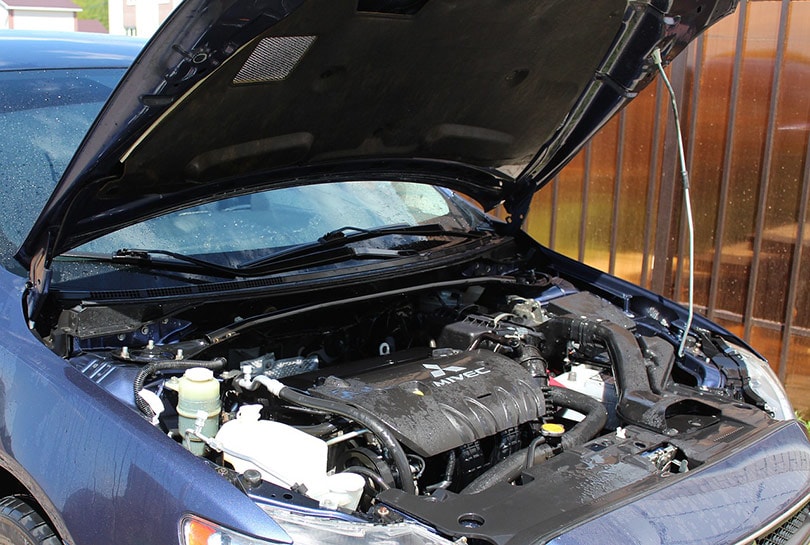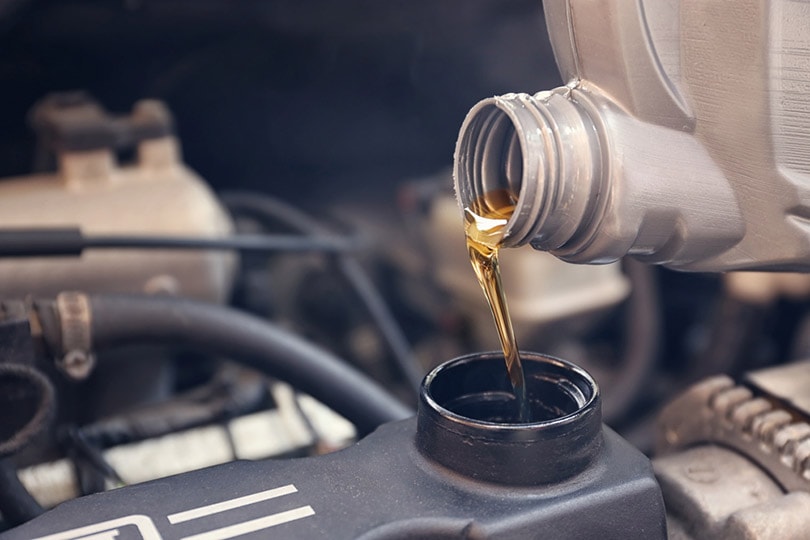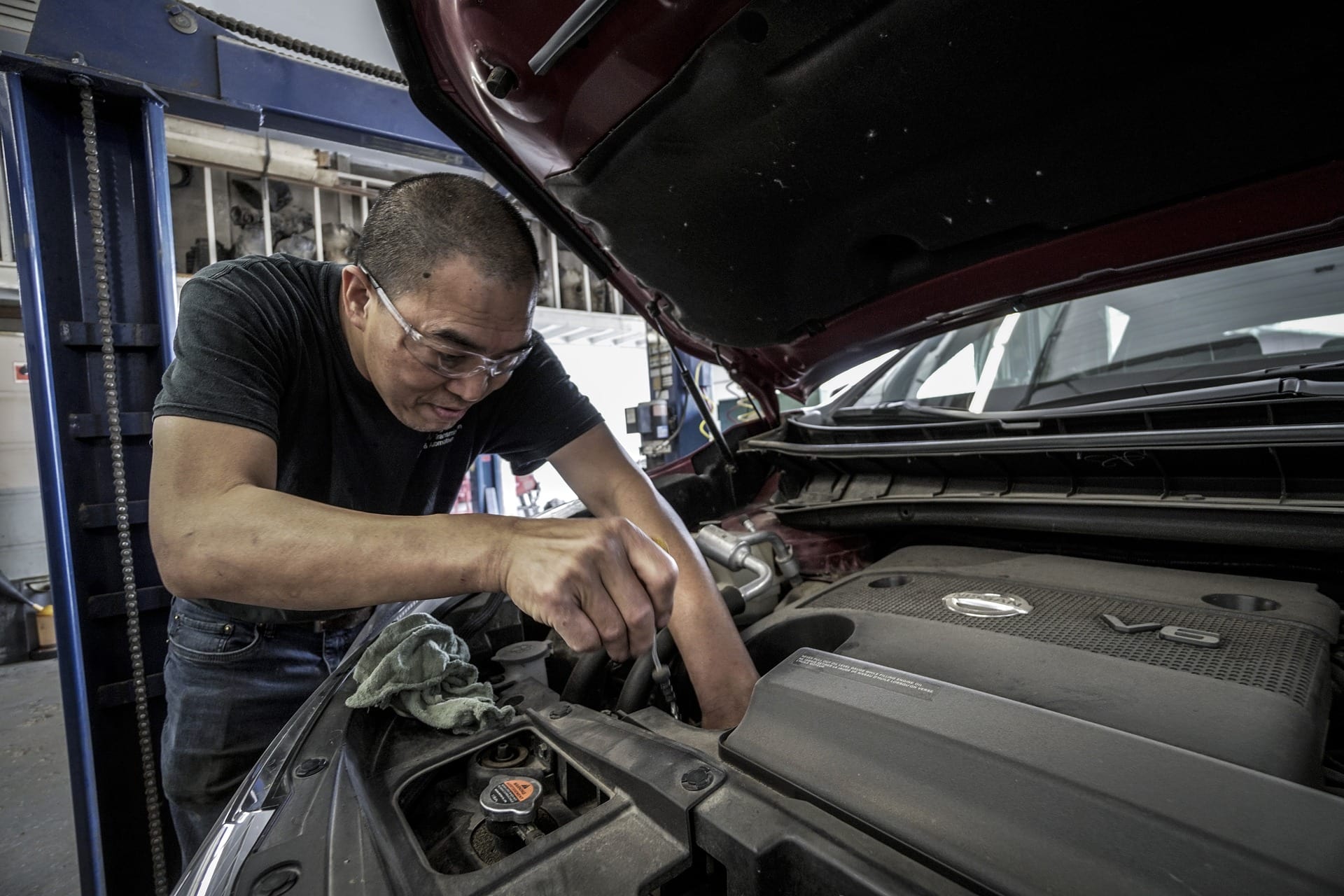What Is The Cost To Replace a Head Gasket In 2023?
-
Codee Chessher
- Last updated:

Cars are complex machines with lots of intricate gears, belts, seals, and other parts. The head gasket is one of the most important seals within the engine, and it’s a huge headache for any driver when they find out their head gasket blew. Let’s take a closer look at exactly what the head gasket does, how much they are to repair, and some common signs the head gasket is wearing out.

What Is a Head Gasket and Why Is It Important?
The head gasket is a gasket situated between the cylinder head and the engine block. Its job is to keep both parts sealed so coolant and oil can flow to the correct parts of the engine. When the head gasket blows, it lets oil and coolant mix between the cylinder and the engine. Needless to say, that’s a pretty bad outcome.
When the head gasket blows, your engine will lose oil and coolant, making it overheat very easily. While you can drive with a blown head gasket for short periods of time, we would highly recommend you not do so. If you continue to drive without getting it repaired, you’re looking at permanent damage to the engine.

How Much Does It Cost to Have a Head Gasket Replaced?
A blown head gasket is a fairly serious car repair, and the price is accordingly high. We estimate you’ll pay between $800 to $2,000 for your typical head gasket replacement. Shockingly, the gasket itself is relatively cheap, and most of this price is the intensive labor involved in extracting the old gasket and replacing it with the new one.
For some older and cheaper cars, it’s sometimes more worth it to get a better car than bother with paying thousands for a new head gasket. For newer cars, it’s always better to just replace the gasket. You can expect a head gasket repair to take between 4 and 8 hours. Some mechanics offer rides or rental cars if you need to go to school or work in the meantime, but you shouldn’t count on that being offered everywhere.
If you’re mechanically inclined, you can choose to buy the head gasket and perform the repair yourself. If you have the correct tools on hand and don’t mind some work, you can save a lot of money by doing it yourself. Most of the cost you pay at a shop is the labor cost, anyway. We’d definitely recommend this if you’re good with cars and want to save some cash.
Unfortunately, depending on if the head gasket caused damage to other parts of the engine, you may end up paying more than you expected.

Additional Costs To Anticipate
Your coolant system should be checked at the same time as the gasket repair because it may have sustained damage while the gasket was blown. The longer you drive with the gasket blown, the higher the risk of damage to the radiator and coolant system. You may need to pay for repairs if the mechanic finds damage and needs to repair it.
You’ll need to pay for new oil and coolant as part of a head gasket repair, because the damage may have contaminated those fluids. It’s not absolutely necessary, but we recommend it.
Other parts that may need to be replaced at the same time are the oil filter, oil, spark plugs, and new hoses for the coolant system. If you haven’t kept up with those, you may end up shelling out for more than just the head gasket repair.

Signs Your Head Gasket Is May Need Replacing
Fortunately, there are numerous symptoms you can observe while you’re driving your car that signal a blown head gasket. Given the severity, we encourage you to immediately have your car serviced and repaired if you notice any of these signs while you’re driving.
- Coolant levels are always low, even after replacing fluid.
- White exhaust smoke when you start your car is one of the most obvious signs your head gasket has blown.
- The vehicle frequently overheats. This happens because the coolant system is leaking and can’t push fluid where the engine needs it.
- Coolant is mixed with oil. When you check your vehicle’s oil, you can spot coolant as a creamy liquid with a foamy consistency. By contrast, oil is black or brownish-black.
- It’s difficult to start the engine. When coolant leaks into the cylinder, it prevents fuel and air from combusting to start the engine. If your car sputters a lot, this may be a blown head gasket.

How To Take Care of Your Head Gasket
Like all parts, a head gasket will wear out eventually. Thankfully, these gaskets usually last 100,000 miles or more, and it’s common for some to last the entire lifespan of the car. Despite this, there are several things you can do to prolong the functional lifespan of your head gasket.
- Regularly top off your coolant.
- Have your coolant system periodically serviced. Mechanics can easily spot a blown head gasket in advance and recommend you have them replace it in advance.
- Be on the lookout for the telltale signs listed above.
- If you suspect your head gasket is blown, immediately take your car to a trusted mechanic. Ideally, you’d have it towed for maximum safety, but the repair is expensive enough without throwing a tow truck bill on top of it.
Related Read: How Much Does It Cost To Replace a Tire Pressure Sensor?


Wrapping Up
Head gaskets are one of many key components that help your engine work correctly, and it’s dismaying to find out it’s blown or worn out. You can do the repair yourself for much less than a professional charges, but it’s not feasible for everyone to go that route.
Featured Image Credit: Fusionstudio, Shutterstock
Contents
